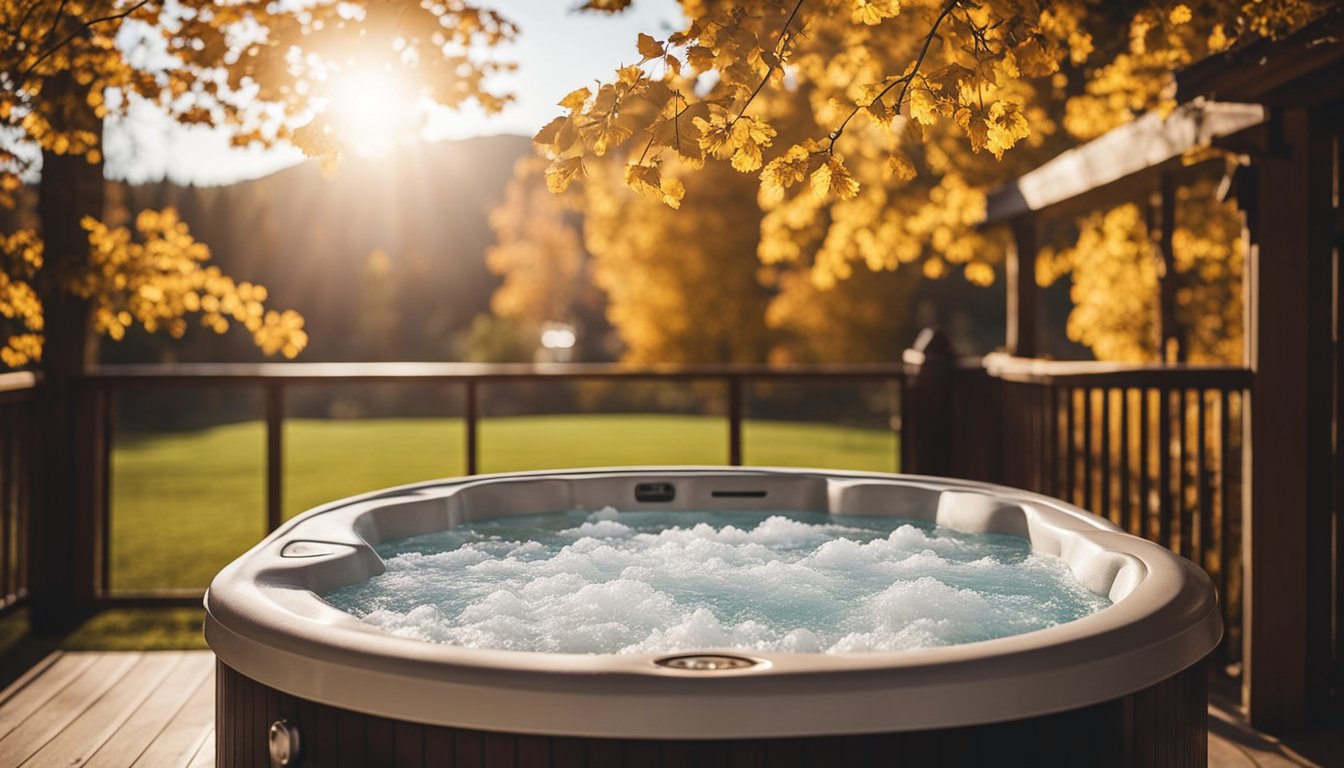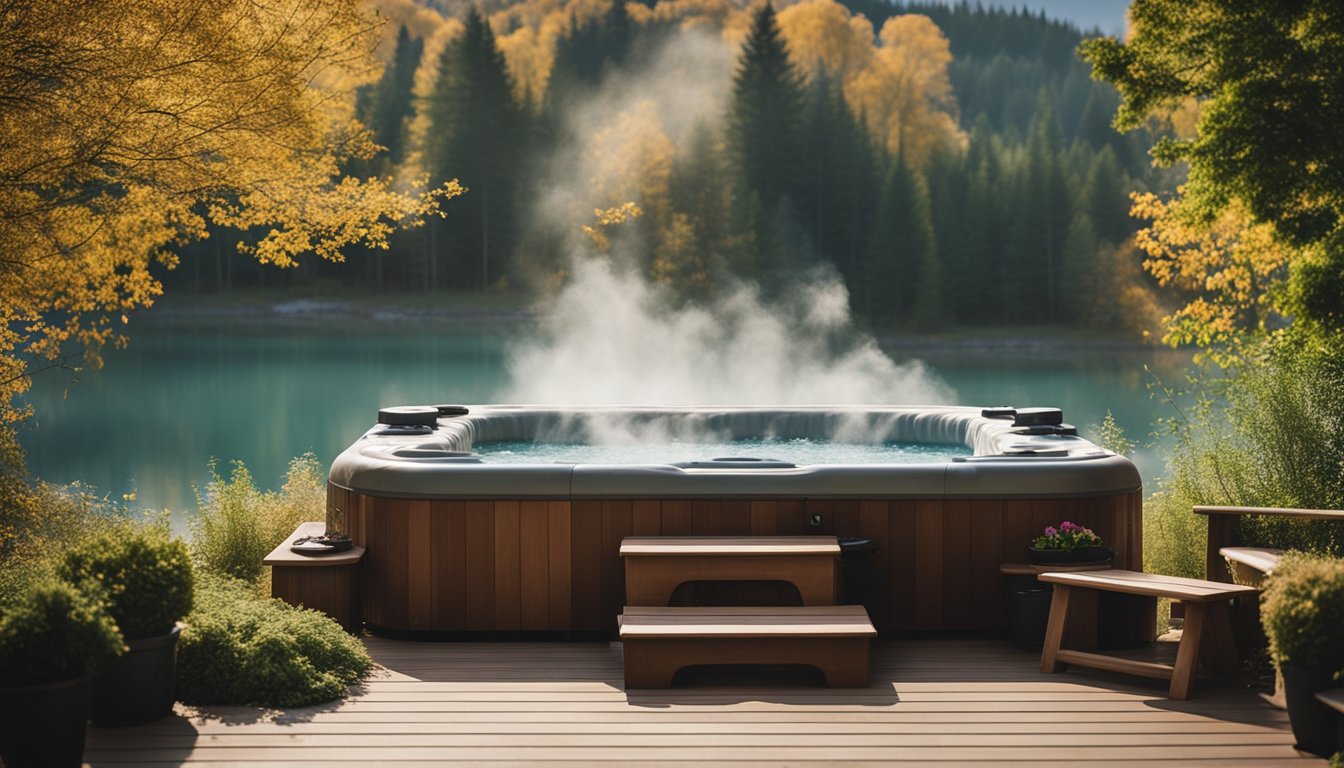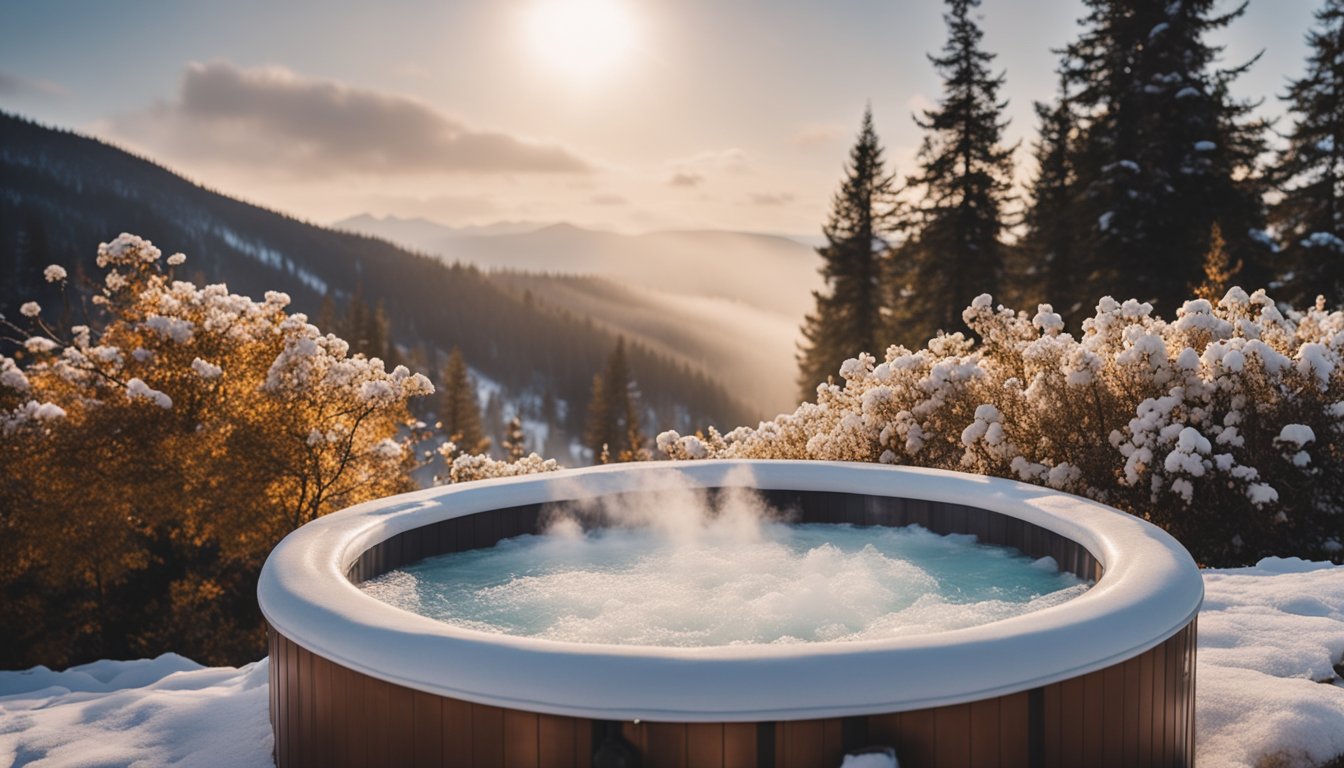Late updated: 08 Aug 2024 11:08
Written by: James Whitaker
Optimal Hot Tub Temperature Settings For Every Season: Your Guide to Year-Round Comfort
Soaking in a hot tub can be a delightful experience throughout the year, but the changing seasons can affect what temperature settings feel ideal. As the weather shifts from the height of summer to the depths of winter, the question arises: what is the optimal hot tub temperature setting for every season?

During the warmer months, a lower temperature setting between 85°F and 95°F can provide refreshing relaxation without overheating. In contrast, the colder seasons call for a higher temperature, typically between 100°F and 104°F, which offers the perfect warmth to counter the chill and soothe our muscles. Personal preferences and safety considerations play a crucial role, making it important to balance comfort and health in all seasons.
Optimal temperature settings ensure our hot tub experience is consistently enjoyable and safe, regardless of the weather outside. Tailoring the temperature to the season enhances comfort and maximises the benefits of our hot tub. Let's dive deeper into how we can make the most of our hot tub year-round.
Key Takeaways
- Adjust hot tub temperature according to the season.
- Ideal temperatures range from 85°F-95°F in warm weather to 100°F-104°F in cold weather.
- Balance personal comfort with safety for the best hot tub experience.
Determining Optimal Hot Tub Temperatures
It is crucial to consider seasonal variations, health and safety factors, and efficiency when determining the optimal hot tub temperature. By focusing on these elements, we can ensure a safe, comfortable, and energy-efficient experience.
Seasonal Variations and Ambient Influence
One must consider the ambient temperature and weather patterns when setting hot tub temperatures. During cold winters, setting your hot tub between 100°F and 104°F (38°C - 40°C) provides a warm, relaxing soak.
In contrast, during hot summer months, a lower temperature of around 95°F (35°C) can be more refreshing.
Fluctuations in temperature, both day and night, affect heating costs. Insulating your hot tub can help maintain consistent temperatures and reduce energy usage.
Health and Safety Considerations
For healthy adults, the ideal temperature is typically between 100°F and 102°F (37.8°C - 39°C).
If you are pregnant, elderly, or have underlying health conditions such as high blood pressure, it is advisable to consult a healthcare professional before using the hot tub.
The Consumer Product Safety Commission (CPSC) warns that temperatures over 104°F can lead to overheating and heat stroke. Children should always be supervised in hot tubs, and their sessions should be shorter and cooler.
Regulating Temperature for Efficiency
Efficient temperature regulation minimises heating costs and energy consumption.
Keeping the hot tub's thermostat at a steady temperature range reduces the heating time and thus can lower the electric bill. For instance, maintaining a temperature around 102°F (39°C), rather than frequently increasing and decreasing the heat, ensures a consistent soak while being energy efficient.
Cover your hot tub when not in use to lock in heat and reduce the heating cost further.
By carefully considering these factors, we can optimise the hot tub experience, making it both enjoyable and efficient.
Enhancing the Hot Tub Experience

Exploring the benefits of hot tubs goes beyond just soaking in warm water; it involves understanding the therapeutic benefits, customising settings for personal comfort, and ensuring proper maintenance for optimal performance.
Relaxation and Therapeutic Benefits
Hot tubs offer substantial relaxation and therapeutic benefits. Soaking in hot water helps to reduce muscle tension, stress, and anxiety.
Body temperature rises slightly during a soak, which can improve blood circulation. This is particularly beneficial for those with chronic pain or arthritis. Besides, the jets and massage features target specific muscle groups, enhancing relaxation.
Maximum temperature settings should be used with caution; staying in hot water over 104°F (40°C) for too long may cause dizziness or nausea.
Customising Your Hot Tub Settings
To truly enhance the hot tub experience, adjusting the settings for personal comfort is essential. Each user has a unique preference for hot tub water temperature.
Using the control panel, you can experiment with various temperature ranges, generally between 98°F (37°C) and 104°F (40°C). For teenagers or children, maintaining slightly lower temperatures, around 100°F (38°C), can be more suitable.
We recommend periodic checks and adjustments based on seasonal changes or specific needs. This ensures that the heater operates efficiently, maintaining consistent warmth.
Hot Tub Features and Maintenance
Ensuring the hot tub features are well-maintained enhances the overall experience. Regular checks on the heating element and hot water tank prevent unexpected cold soaks.
Maintaining the pumps, jets, and lights can prolong the lifespan of your spa. Electrical components should be inspected to avoid malfunctions.
During a vacation, it's advisable to lower the temperature to conserve energy. Periodic cleanings using recommended products keep the spa sanitary and safe.
Overall, appropriate features and maintenance ensure that each soak is as rejuvenating and comfortable as the first.
Frequently Asked Questions

This section covers common queries about adjusting hot tub temperatures to suit different climates and usage patterns, ensuring both comfort and efficiency.
What is the recommended hot tub temperature for winter comfort?
In winter, maintaining a hot tub temperature between 37°C (98°F) and 39°C (102°F) enhances comfort. Warmer settings can provide relief from the cold, but it’s essential not to exceed 40°C (104°F) to avoid overheating or health risks.
How should I adjust my hot tub temperature for summer use?
During the summer, many prefer lowering their hot tub temperature to between 29°C (85°F) and 35°C (95°F). This provides a refreshing, cooler soak while still offering a relaxed experience. Adjust according to personal preference and outdoor temperatures.
What is considered an energy-efficient hot tub setting?
Energy-efficient settings usually range from 35°C (95°F) to 38°C (100°F). These temperatures balance comfort and energy consumption, reducing the load on your heater and thereby saving on energy costs.
At what temperature should the hot tub be maintained when not in frequent use?
When the hot tub isn’t used frequently, set the temperature to around 25°C (77°F) to 30°C (86°F). This keeps the water from freezing in colder months and reduces energy usage, helping maintain an optimal balance of readiness and economy.
Is it more economical to keep a hot tub at a constant temperature?
Keeping the hot tub at a constant temperature can be more economical. Frequently raising and lowering the temperature uses more energy. A steady setting around 35°C (95°F) to 37°C (98°F) ensures immediate readiness and reduces wear on the heating system.
What are the ideal hot tub temperature settings for a warm climate such as Florida?
In warm climates like Florida, a hot tub temperature between 29°C (85°F) and 35°C (95°F) is ideal. This prevents the water from feeling too hot and maintains a refreshing environment, especially during the hot months. Adjust based on personal comfort and local weather conditions.
